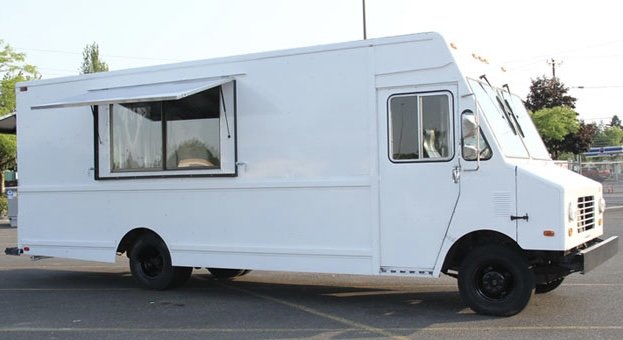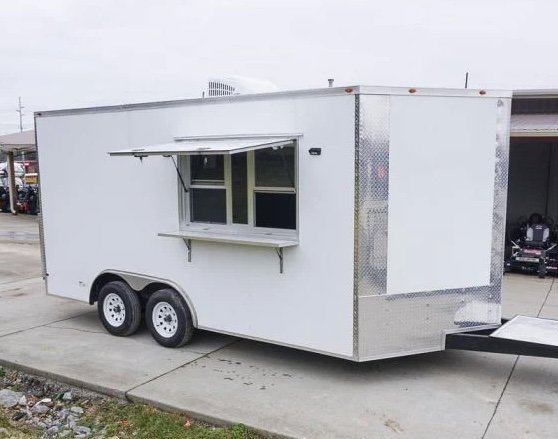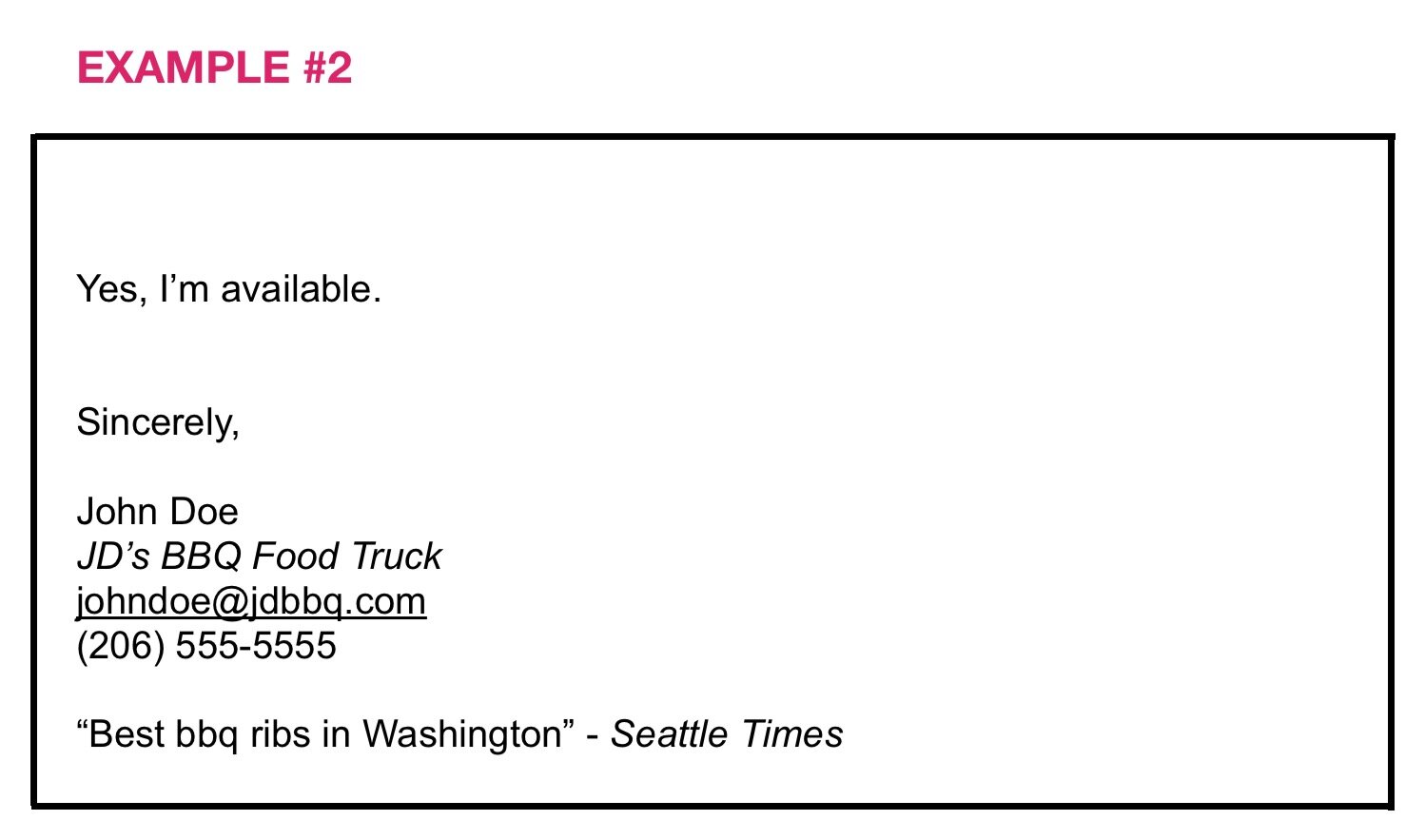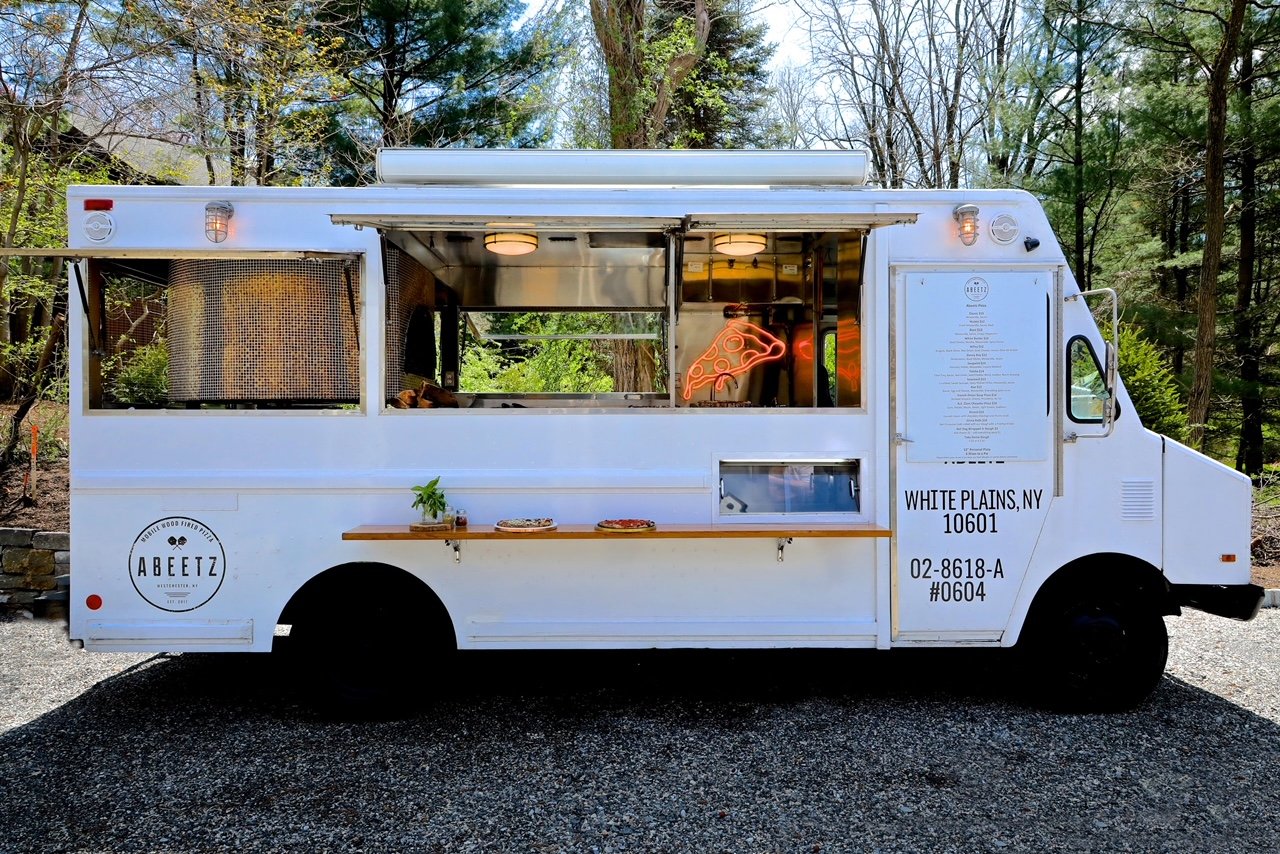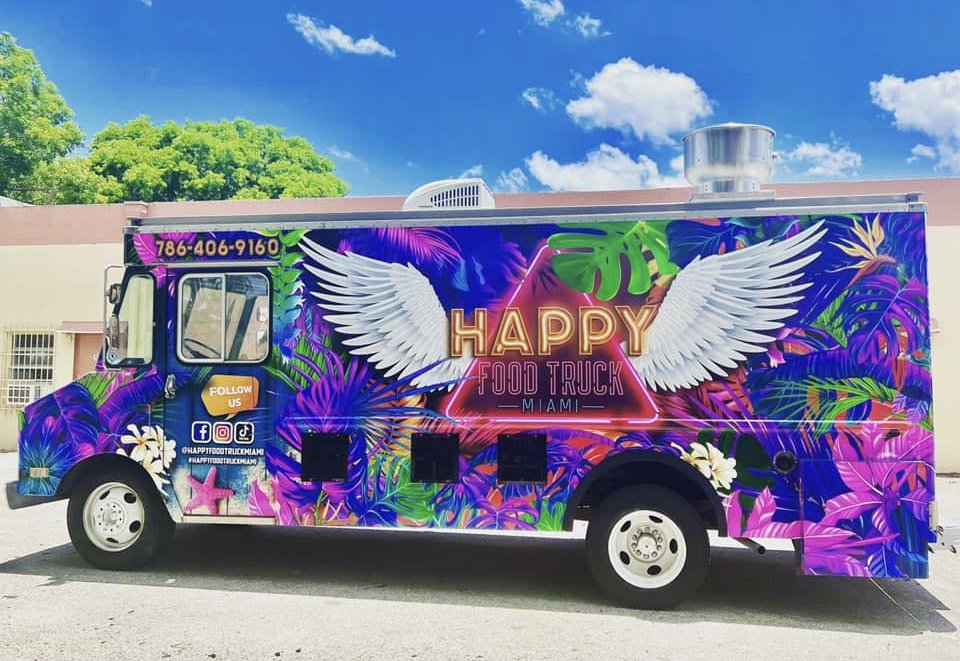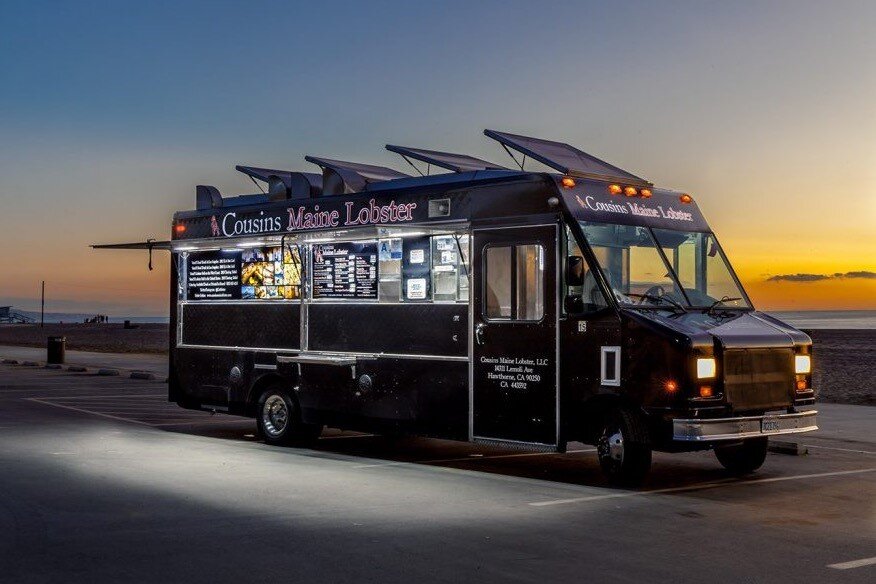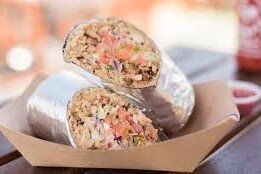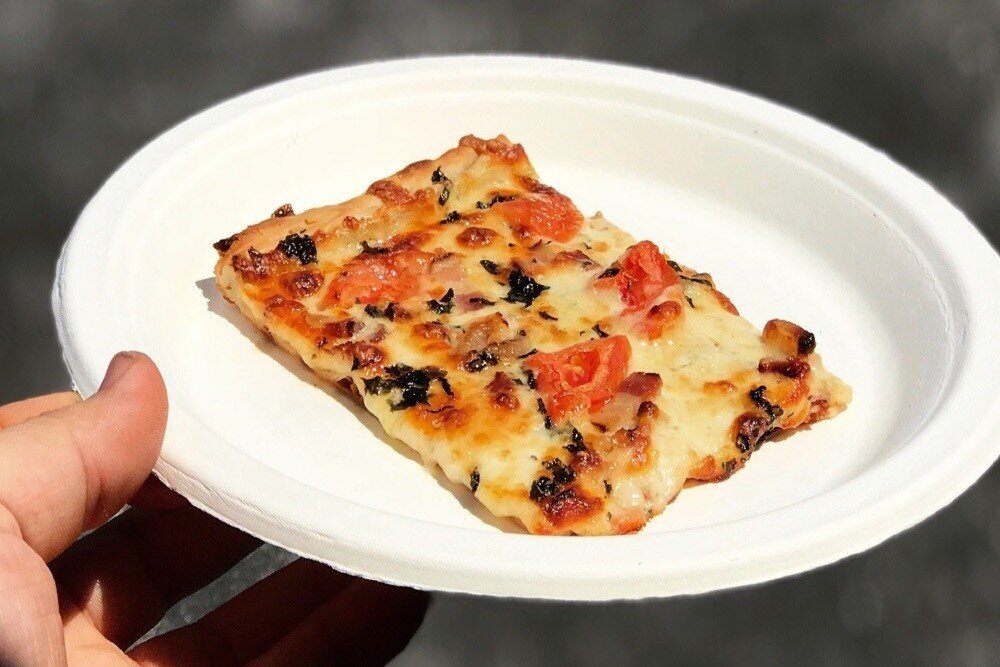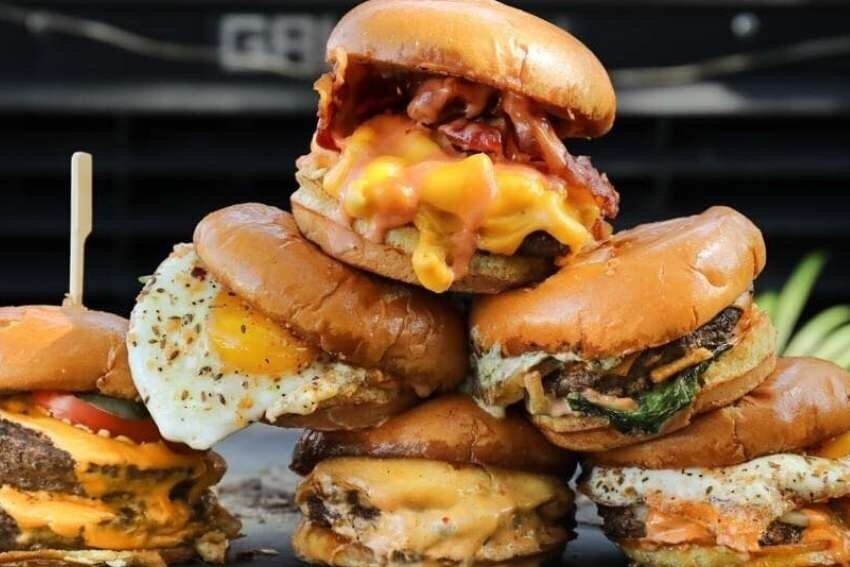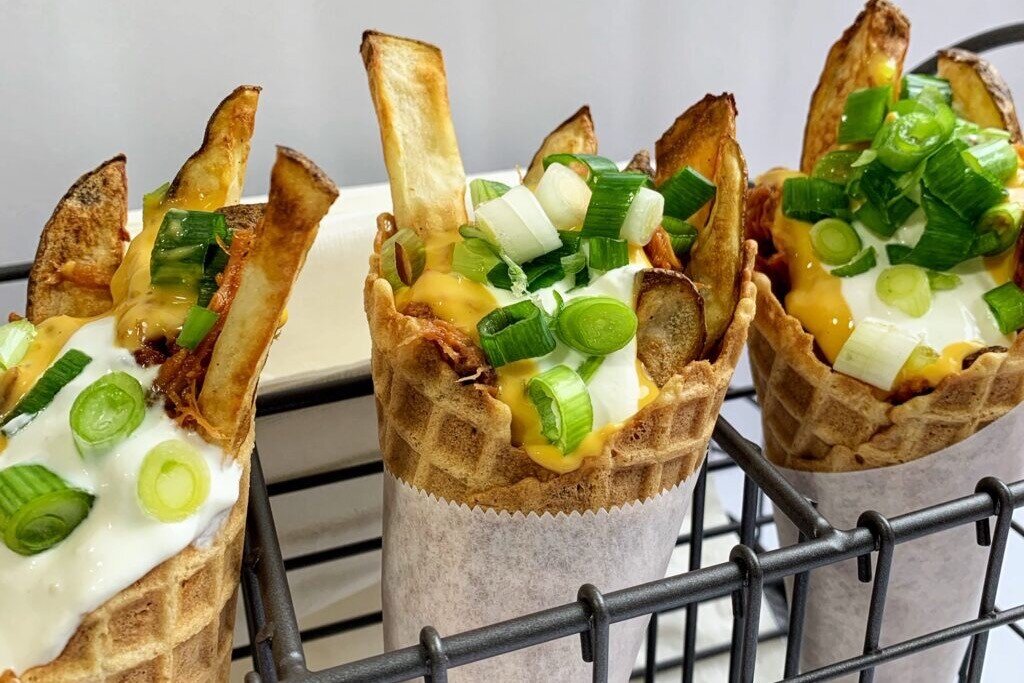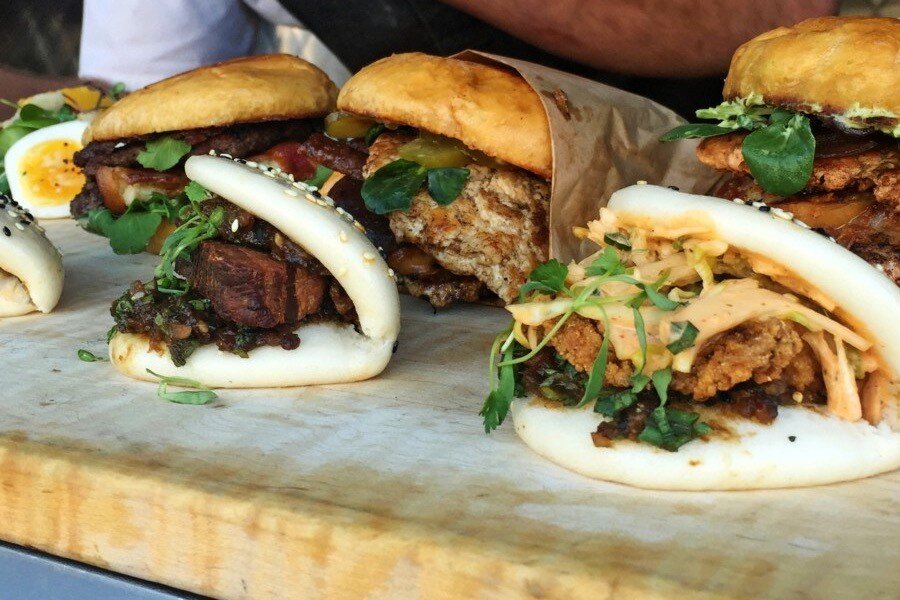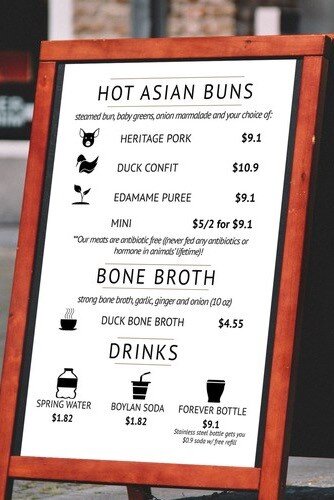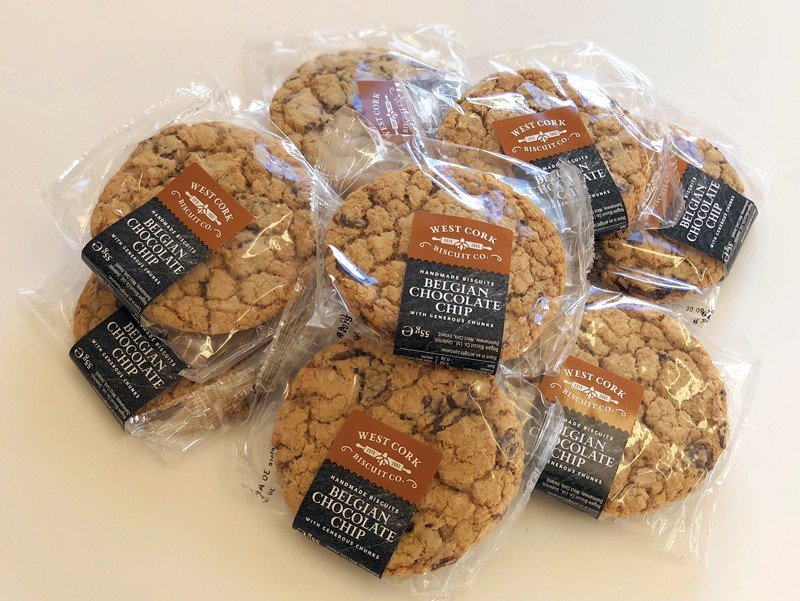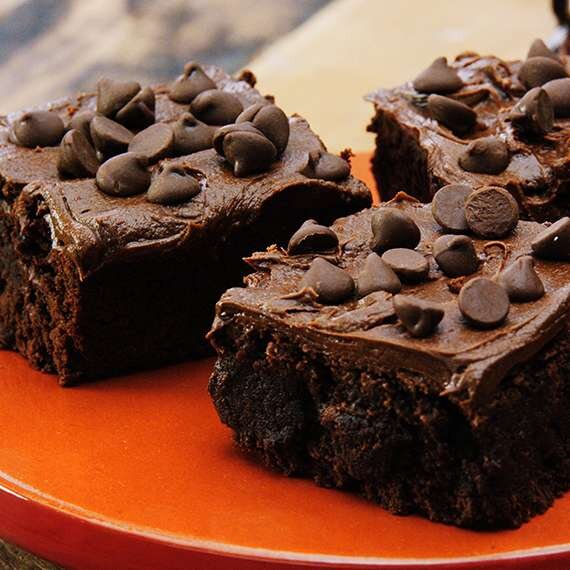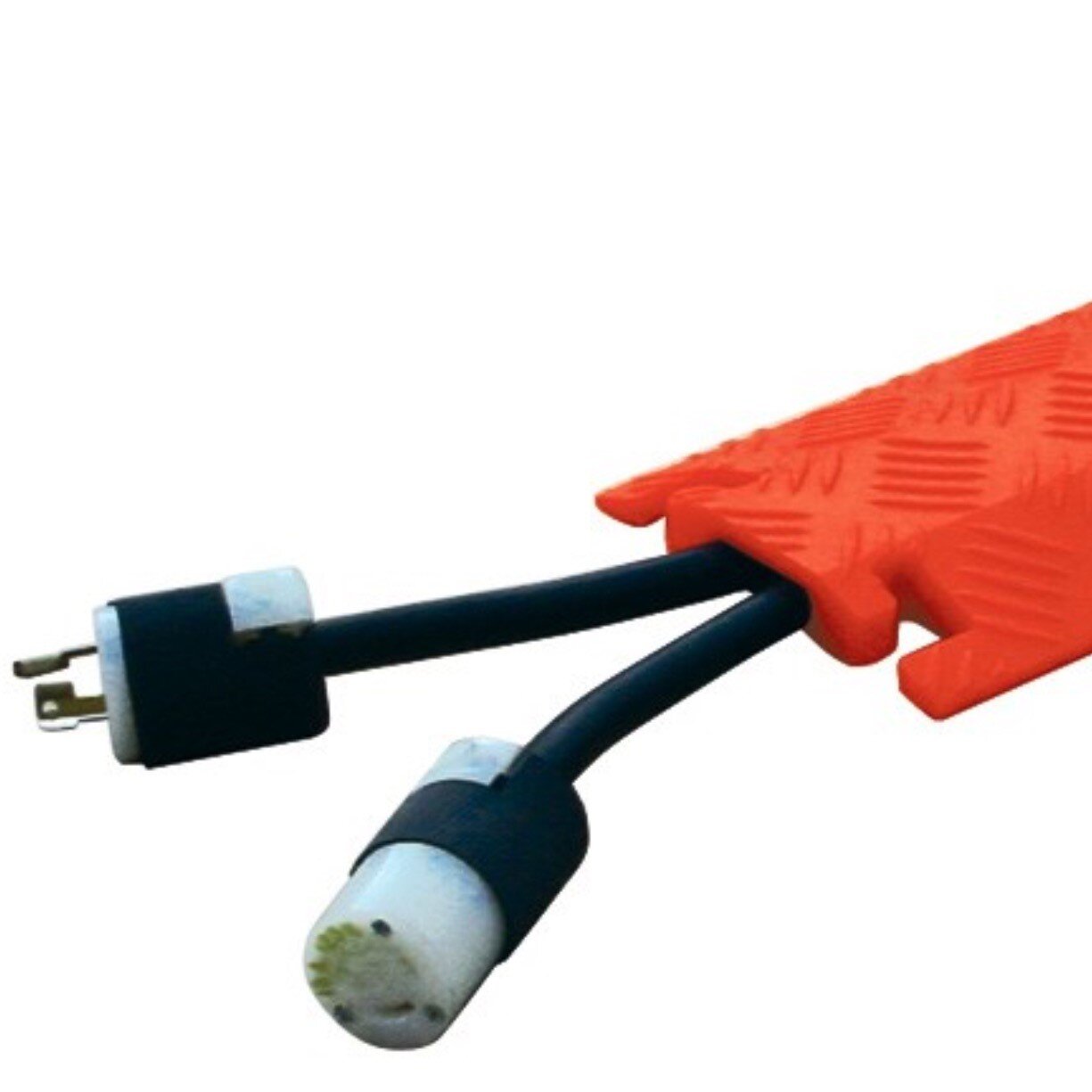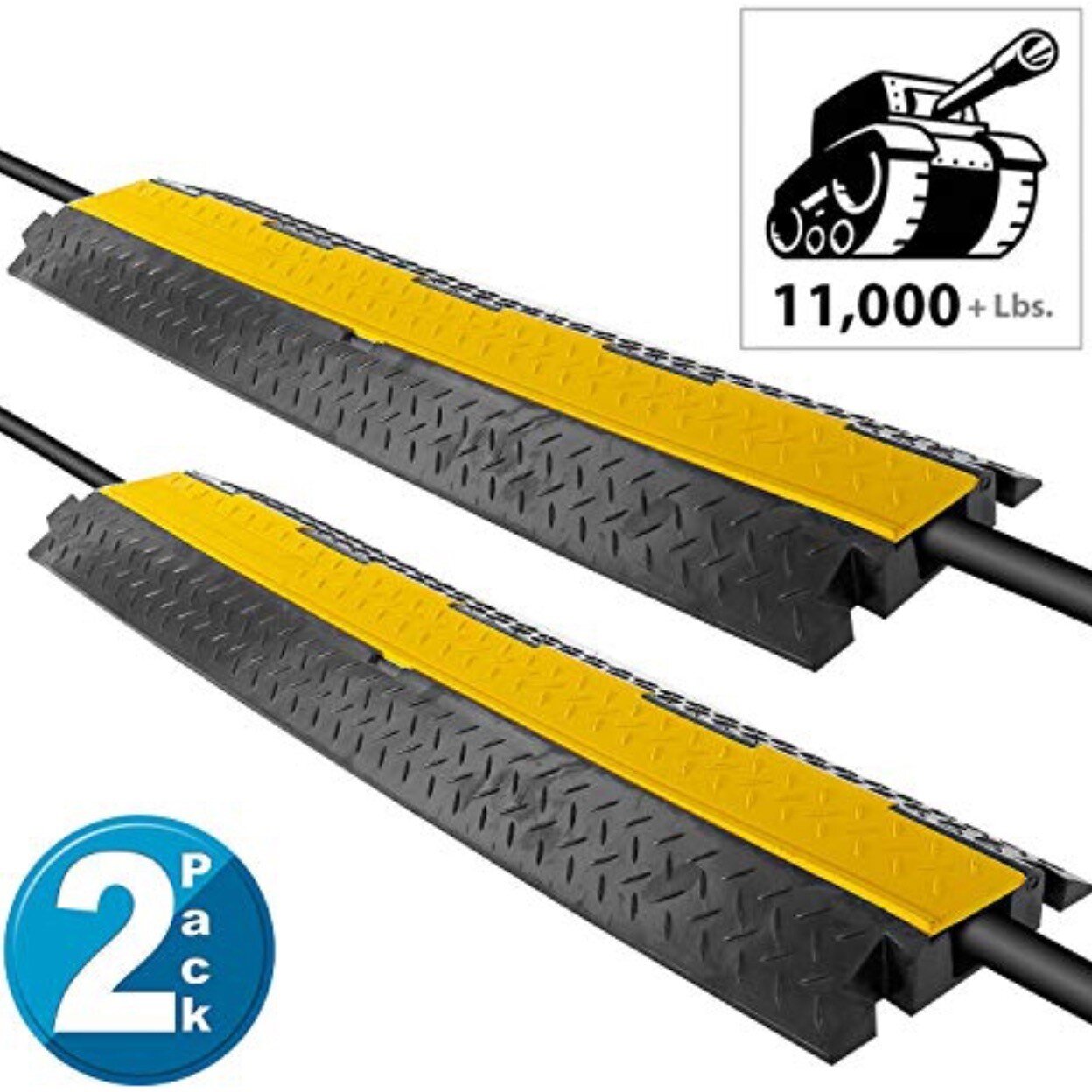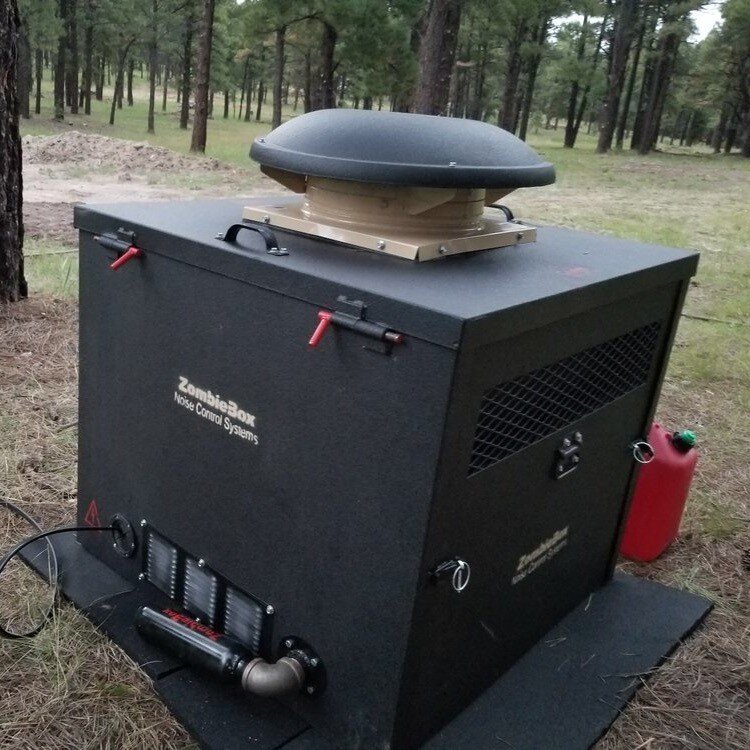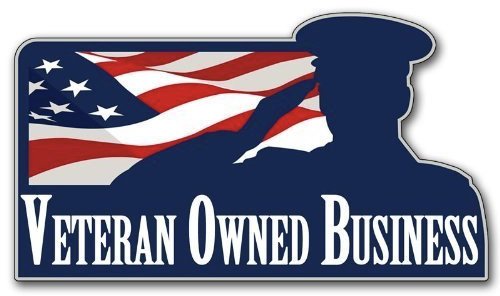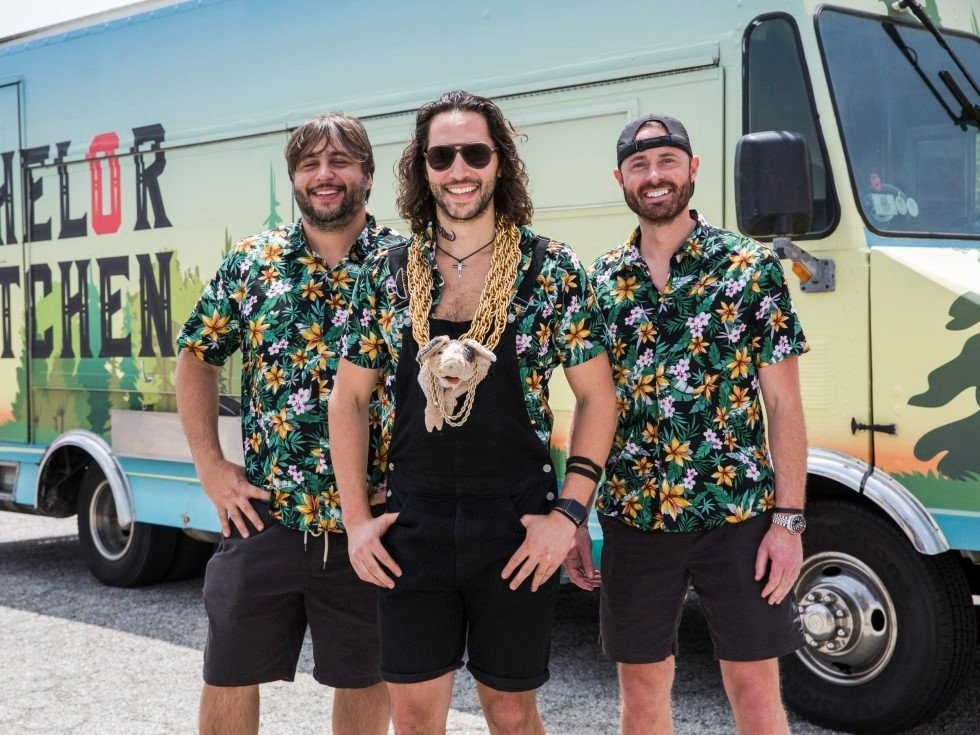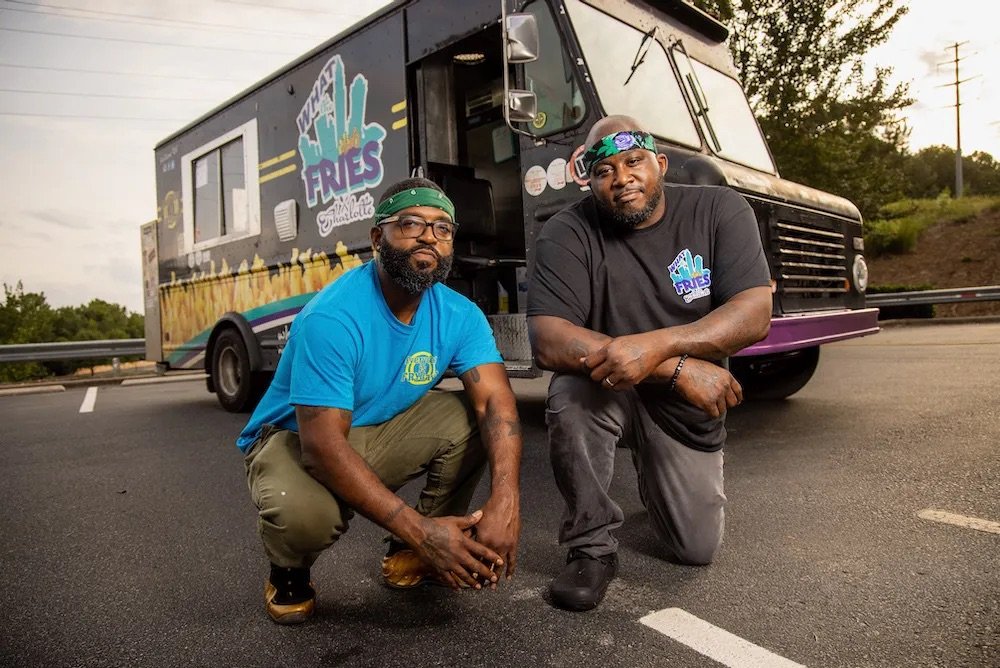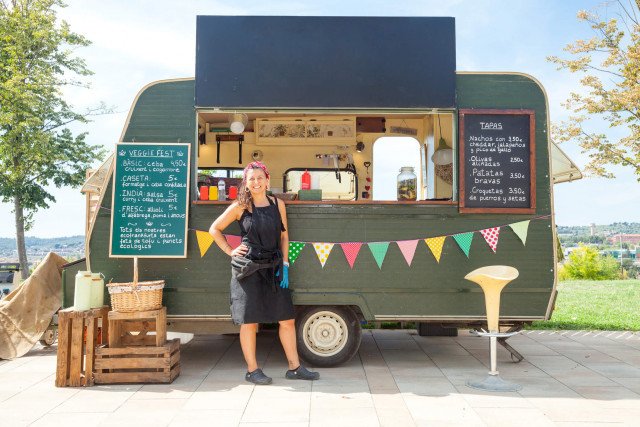Tips & Suggestions
The information below is intended to help you avoid making some of the most common food truck operator mistakes. Over the years we have seen first-hand which business practices work best, and which ones don’t. It’s always better to learn from the mistakes of others.
Truck, Trailer, or Cart?
Which type of mobile food unit (food truck, food trailer, or food cart) is the best for your business, your menu, and your budget?
Food Carts - In WA, a mobile food unit that functions without any onboard staff (considered an “unoccupied unit” by L & I) is a food cart. To get to the vending or service location food carts are usually towed behind a vehicle, transported inside a trailer, or stored nearby. A food cart is the least expensive mobile food vending unit and its size and maneuverability make it well suited for a wide variety of vending locations. Some vending locations simply do not have space to accommodate a large food truck or trailer, or the vending area (e.g., cobblestone bricks) cannot support the weight of a large food truck or trailer. Unlike trucks and trailers, food carts do not need to go through the WA State L&I plan approval process, but will still need a county health permit. The health department Risk Level (1, 2, or 3), is based on your menu, and it will determine the type of equipment required to be on your food cart. Possible cons: Cooking, serving, and transacting while standing outside (behind or next to a food cart), will expose you to the weather and may cause safety concerns (regarding street crime or harassment) depending upon the location and the time of day. Although carts are very maneuverable, they are usually still quite heavy and may require a fair amount of strength to move, especially up or down hills. Some venue/event hosts might prefer vendors with full-size food trucks and/or food trailers. Carts are also required to have “overhead protection” by the state food code.
Food Trailers – Food trailers require a tow vehicle (usually a full-size pickup truck) and can come in a wide variety of styles and sizes. Because the tow vehicle is separate from the food trailer, it can be replaced with another tow vehicle if/when there are maintenance issues, which allows vending to continue. Tow vehicles can be used to transport staff and supplies, and to run errands and restock the trailer during long events. Possible cons: Towing a food trailer, especially a large one, takes some getting used to. Parallel parking, maneuvering, and backing a food trailer can be challenging, especially in crowded city traffic or in tight events spaces. It will take some practice, but ANYONE can learn to do this. Don’t be intimidated.
Food Trucks - Food trucks offer almost unlimited style and size options, and because there is no need for a tow vehicle, they can backup, maneuver, and parallel park more easily than a trailer. Possible cons: Food trucks can cost more than food trailers and carts. Food trucks can be completely out-of-service if/when mechanical problems occur. Not having a trailer tow vehicle might necessitate having some sort of support vehicle to transport staff, supplies, and run errands.
Service Window Location: Most food trucks and food trailers have the service window on the righthand side (i.e. passenger side). This allows you to park on a city street with your service window facing the sidewalk, where your customers will be ordering and standing. If your service window is on the lefthand side, you’ll either need to point your vehicle against traffic, or have your customers standing in the street, which are both bad options. Also, it can be difficult to sell a used mobile food unit if the service window is not on the righthand side.
Email & Voicemail
A surprising number of food truck operators have not bothered to create even a basic email signature. We receive emails daily that lack anything written in the subject line and without an email signature. Example: We receive an email “Can I still book for next Tuesday?” Unfortunately, we have no idea who this person is or where they’re trying to book. Sometimes their email address helps us figure out who the sender is, but sometimes the email address is no help at all. We just don’t have time to do detective work, so these emails usually just get deleted. It’s hard to imagine that a potential catering client would feel comfortable booking a food truck with such an unprofessional and sketchy looking email (see example images below). An email signature should always include your name, the name of your truck, your phone number, and your email address. There should also always be a subject in the subject line.
The same goes for your outgoing voicemail message. “Hey, leave a message” is not nearly as good as identifying yourself and/or your truck and politely asking the caller to leave a message.
Both of these simple improvements cost nothing, take only a couple of minutes to complete, and will improve your business.
Get the Person’s Name, Get the Code Number, and Get it in Writing
When interacting with government regulators/inspectors, or municipal employees, always remember to do the following:
Get their name, their title, and their contact information. If you contact the WSFTA requesting assistance with a problem, the first question that we’ll ask you is: Who were you speaking with? If you don’t know, it’s unlikely that we can help you.
If a regulator/inspector tells you that you are in violation of a code that you are unfamiliar with, ask them to specifically cite the code (by number). If you contact the WSFTA requesting assistance with a potential code violation, we will need to know which specific code(s) (by number). If you don’t know which codes you’ve potentially violated, we can’t help you.
If a government employee tells you something in-person, or over the phone, you will NOT have any proof of what was said. We strongly recommend communicating by email, which establishes a record of the conversation. If a government employee tells you something in-person, it’s a good idea to follow-up with an email to clarify the conversation and establish written proof of the conversation. If there’s a disagreement about what was said, you will lose if you don’t have proof.
Be Creative with Your Menu
Food trucks aren’t just restaurants on wheels, the public expect something extra, something that will really WOW them. You want customers to be so blown away by your food that they can’t wait to tell others about it. If you see customers’ faces light-up when they read your menu, you’re doing it right. If you see customers taking pictures of the amazing food that you’ve just handed them, you’re doing it right. Don’t bore the public with ordinary choices. Great tasting food is already expected, so great taste alone isn’t usually enough. Always try to have at least one or two signature items that will set you apart and create a buzz. Give your meal options interesting and fun names, which will help customers remember their favorites and will help build your brand. Be unique!
Brick & mortar restaurants are increasingly offering “Street Food” options, which is their effort to keep up with the creative and popular cuisine that food trucks are well known for serving. Example: A food truck operator in western WA started a grilled cheese sandwich truck a few years back, and although the truck was well-named, had interesting graphics, and a very friendly crew, the sandwiches just didn’t have any WOW! factor. The menu was: Regular Grilled Cheese, Deluxe Grilled Cheese (w/ 3-cheeses), and a Grilled Ham & Cheese, all served on white bread. On the other hand, for example, the Grilled Cheese Experience food truck, always had a long lines in front of their truck, because they offered a wide variety of very creative and delicious sandwiches. Here are just three examples:
Super Spanish: Manchego & Gryer Cheese, spicy lamb sausage, caramelized onion, crispy potato chips, sunny side up egg, on artisan rosemary olive bread.
BBQ Bomb: Slow-smoked boneless ribs, bourbon molasses BBQ sauce, Tillamook pepperjack & chipotle cheddar, mac & cheese, on a parmesan-crusted sourdough.
Bluesy Chick: House smoked chicken, blue cheese, Mt. Townsend Campfire (smoked jack), caramelized onion, on a bacon-crusted sourdough.
We chose grilled cheese sandwiches as our example because they may seem pretty simple and straight forward, but they’re not, as the Grilled Cheese Experience showed with their creative menu. This kind of creativity can be applied to ANY type of cuisine. Examples of extreme foods are easy to find on the internet and on TV cooking shows. Look at what others are doing, and then add your own twist and make it truly unique to you. There’s unlimited options, so there’s no need to copy anyone else, just be inspired by their boldness and creativity. The sky is the limit.
WARNING: Try to avoid being TOO diverse with menu items. Stay in your lane. Example: A brick-oven pizza truck that also serves Chinese food, gyros, tacos, and “fresh” seafood, may cause some concern with customers. Specialize, and dominate that category.
Business Contracts & Agreements - BE VERY CAREFUL
Before you write a check for your new custom food truck, or commissary kitchen lease agreement, or sign any legal documents, make sure your interests are well protected. It might be wise to hire an attorney to carefully review these documents, BEFORE you sign anything, and BEFORE you pay.
A common mistake is hiring a food truck builder and agreeing to pay all, or part of the cost, up-front without ever getting a timeline commitment from the builder. Without a written timeline, with specific dates, your food truck might be done in a month, or a year, or in several years, and there would be nothing you could do about it. If you need your food truck to be fully completed and ready to pass its L&I inspection by a specific date, get it in writing. Each year we get reports regarding some shady food truck builder who has taken someone’s life savings and then just seemingly disappeared, refusing to respond to calls or emails. The legal system can help you, but ONLY if you have a clearly-worded signed contract or agreement.
Another common mistake is signing a long-term commissary kitchen lease, before you fully understand your commissary kitchen needs or the reasonable going rate for commissary kitchen space in your area. New vendors sometimes agree to a commissary kitchen lease, only to later discover that they’re paying twice as much as other vendors in the area, and sometimes these lease agreements can lock them in for years.
Lastly, don’t agree to pay for a long-term vending location, without first testing the location for a month or two. Property owners are sometime overly-optimistic (or dishonest) about the number of customers that the location will average each day. If the property owner isn’t willing to let you lease the space for a short test period, before committing to a long-term lease, find another location.
To Cater or Not
More and more food trucks are delving into catering to supplement their time while not on the streets, or during the colder winter months. There are many common mistakes beginners have run into over the years. Here is a handy list of food truck catering tips to follow when taking the dive into catering:
1. Agree on date, time, menu, price per person and number of guests.
2. Get it in writing - either a written, signed contract or emails with wording that the client agrees.
3. Bill (invoice) half the total as soon as it's agreed. (You can use Square's invoice service.)
4. A week before the event, email for a final head count (number of guests), and recalculate the total, then invoice for the final balance. Price x number of guests + 20% service charge (tips, reserving the truck, time to arrange) + sales tax.
5. Don't allow the initial number of guests to go down, and have a weekday, and a weekend minimum.
Understanding some food truck catering difficulties in short article here.
Graphic Designs & Wraps
Once you’ve picked the perfect name for your mobile food business, the next step is to design the logo and graphics that will help distinguish and define your brand. We recommend looking at hundreds of food trucks/trailers online to determine which colors, designs, and fonts are the most appealing to you and will suit the character or your business. This is your chance to really be creative. Brightly colored food trucks are great at catching the eye of potential customers and can help clearly distinguish your food truck from package delivery trucks or other commercial vehicles. Consider how well the color of your mobile unit will help hide dirt and mud. Avoid using small or unnecessarily fancy fonts. A potential customer driving by at 35-mph might only have a couple of seconds to decide whether your food truck looks interesting enough to try. Your mobile food unit can serve as a mobile billboard, constantly promoting your brand, so use all sides including the front and the back. Some food trucks/trailers even have their name and logo on the roof, which is clearly visible to workers in tall buildings. Very smart! It's not uncommon for large events to line up all the food trucks and trailers in a row, so make sure your mobile unit will stand out and get the attention that it deserves.
The photos above show how the graphics & wrap can help draw lots of attention to your truck, or not draw much attention at all. The key is to find what’s best suited for your brand.
WARNING: Don’t let your wrap cover your L&I insignia, the local fire authority will want to see that sticker.
Exterior Lighting for Food Trucks
Some vending locations are very well lit, and some are not. In the summer, it usually stays bright late enough into the evening to not be a problem, and late night vending locations (such as breweries), often have good exterior lighting. However, if you plan to vend during the winter months, and your vending site isn’t very well lit, you’ll want to equip your food truck with exterior flood lights that illuminate your name/graphics and the area immediately in front of your service window. This will help drive-by customers see you and will provide greater safety for customers standing in front of your truck. A well-lit food truck may also help deter criminals and will make you, and your staff, feel safer.
In addition to plain white flood lights, there are a wide variety of colored accent lights that can be used to add excitement and flair to your food truck for a minimal investment. These lights can help frame the shape of your truck or create a very cool effect by being placed underneath the truck. The same retail outlets that sell and install car stereo equipment can also install accent lighting systems, and /or you can quickly buy online through Amazon. Below are some examples:
Consider Your Market, Your Margins, and Your Risk Level
Some food truck operators choose their type of cuisine based on the food that they want to prepare, the food that drives their passion and best expresses their culinary perspective. Other food truck operators are more focused on simply maximizing sales, and they choose their type of cuisine based on market demand. You may lean one of these two ways, or maybe you’re somewhere in the middle. There is no right or wrong way to go, as long as it meets your financial expectations and makes you happy.
Market: Sometimes a food truck operator will chose a type of cuisine based on a lack of that cuisine in their local market. They want to fill this gap, and sometimes it works really well. However, sometimes there’s a good reason why no one else is serving that type of cuisine, and it could be because there’s not much demand for it. Research your vending area(s) carefully, before making any final choices about cuisine types. Perhaps you will want to conduct quick surveys of people who live and work in the area(s) where you plan to vend. The best time to find these people is during your planned vending days/hours. Introduce yourself and explain that you’re planning to start a new food truck and would really like their opinions and feedback about cuisine type, pricing, the location, and best dates/times for service. The results from this survey might really surprise you, or it could confirm that you’re on the right track.
Unusual and rare types of cuisine are great, but make certain that there will be enough demand for this food to meet your expectations. Keep in mind, there are hamburger restaurants EVERYWHERE, yet hamburger food trucks usually do really well. The reason is simple, Americans love hamburgers, especially the kind of fun and innovative hamburgers that food trucks are known for serving.
Margins: Carefully study the margins on all of your food, down to the penny. Each month look back on your sales and determine which menu itmes are selling the best, and of those, which have the highest profit margins. Remove menu items that aren’t selling well, especially those with lower profit margins. These items can harm your business, so don’t delay in making changes. The price you charge for your food is important to your customer, but the margin is equally important for you to consider. Example: A seafood truck selling $18 meals might have high gross sales revenue, but the hot dog truck parked next to it might have much higher net revenue.
Risk: Consider which types of cuisine are riskier to serve and determine your comfort level with that amount of risk. Example: A waffle truck might experience a bad day of ticket sales, due to unexpected bad weather, but having to discard a few gallons of waffle batter at the end of the day, although unfortunate, isn’t going to cause significant damage to their bottom line. In contrast, a seafood truck that experiences a bad day, will suffer a much more significant financial loss if they have an excess of lobster, halibut, or crab meat remaining at the end of day.
Food Truck Names
If you have not finalized the name of your new food truck, here are a few things to consider. First, your food truck name should ideally reflect the character of your food truck and its food (eg. fun names for fun cuisine, more serious names for more serious cuisine). It helps if the name is catchy or clever, and easy to remember. Avoid using words that are hard to pronounce, hard to spell, and hard to understand how they relate to your cuisine.
Broad vs. Specific Names: “Joe’s Food Truck” is pretty broad and could serve almost any kind of cuisine. Joe’s Gourmet Food Truck” is pretty broad, but customers will expect gourmet food. “Joe’s Waffles & Tacos” is pretty specific and will somewhat limit the flexibility of the menu. Broad names allow you greater flexibility to radically change the types of cuisine you offer, without having to completely rename, rewrap/repaint, and rebrand your food truck business. However, a more specific name might be more appealing and/or interesting to prospective customers, which could help draw more business.
In sum, put lots of thought into your food truck name, before moving forward. Do some research and make sure there are no other businesses with the same, or similar name, and make sure the web domain and social media handles are available. Avoid any name that will not be easy to look-up on Google, for example: “Great Tacos” is a cool name, but your customers will never find you online, because the words “great” and “taco” are very commonly used together. Using the name “Joe’s Great Tacos” will make it much easier for people to find you online. You can get some ideas here.
Food Photos
Many of the most successful food trucks are using social media to their advantage (see also Social Media & Marketing, in Tips & Suggestions). We’ve learned that the best way to draw attention to your social media posts is to include a photo of your food. An amazing looking food photo is much more likely to get viewed, reposted, re-Tweeted, shared, and/or liked. However, don’t just snap a quick shot of your food, really take some time and make it a photo of food that people will be drawn to. A bad, or mediocre, photo of your food might actual diminish a customer’s interest in visiting your food truck. Lighting, perspective, color contrasts, background (perhaps of your truck or logo), and many other factors need to be considered when photographing your food. Remember, this is how many people will first experience your food, so take it seriously, just like you take the taste of your food seriously.
Also, when plating your food, regardless of the container that your using, try to make the presentation reflect the quality and taste of the food. If you see your customers’ eyes light-up when you hand them the food, you’re doing it right. If you see your customers taking photos of the food before they start eating it, you’re doing it right. In the later case, these customer-taken photos will likely circulate on social media, greatly benefitting your business and your brand.
There are some really great videos on YouTube that can teach you how to take amazing photographs of food. Also, don’t forget to use the digital editing on your phone or digital camera to alter and improve your photos. It’s truly worth the effort, and it’s fun to see your food look as great as it tastes.
Example #1: The two food photos below were posted on the internet. One is slightly out of focus and drab in color, and the other is just boring and looks like reheated frozen pizza. In fairness, it’s possible that both of these dishes taste great, but I wouldn’t bother to track-down either of these food trucks after seeing these photos:
Example #2: The photos below are much more likely to excite prospective customers. These are NOT the best food photos on the internet, but they’re really good, really creative, and very doable for anyone willing to spend a bit of time learning to take better food photos. Your photos don’t need to be studio quality, just done well enough to make customers REALLY want to try your food. Also, putting your food truck, your logo, or happy customers in the background is creative and helps to convey the fun of dining at your truck. When done correctly, these photos can tell a story about your food.
Food Truck Photos
Make sure the photo that you submit for placement in our Food Truck Directory (and on the header/homepage of your Facebook & website) is a good one. The photo should show your whole truck, and ideally on a nice day. A pic showing only part of your food truck isn’t very helpful for customers who will be trying to find you. The cleanliness of your truck, and the neatness of the area surrounding your truck, will give customers (rightly or wrongly), an idea about how neat and clean your food service areas are. Showing your truck on a nice day gives customers a very positive image. A photo of your truck on an ugly, or rainy day, may do the opposite.
You can always update your directory listing photo, just send it to us anytime.
Occasionally, you’ll want to post some photos on social media of customers standing in line and/or gathered near your truck. During the Covid-19 crisis, make sure that ALL photos show customers maintaining proper social distance and ALL wearing masks. Otherwise, you may deter prospective new customers and might get some unwanted attention from the local health department.
Example #1: This truck is very neat, clean, and fully visible. This would be perfect as a Food Truck Directory photo.
Example #2: This truck is only partially visible in the photo, which isn’t very helpful for customers who may be trying to find it.
Menu Boards
Menu boards are usually either dry erase or chalk boards, and are usually either mounted on the food truck, or placed on the ground near the truck if using an A-board style. Whichever style you use, there are a few things to keep in mind. Try to avoid mounting or placing your menu board in a location where it can be easily blocked by customers standing in line or gathering in front of your food truck. If using an A-board, place it toward the end of the truck, clearly visible and approachable. If mounting on the truck, place it well off to the side of the window and high enough to remain visible, even if a crowd gathers in front of your truck.
If your menu board is handwritten, make sure the print is VERY neat and legible. Don’t crowd too much information onto the board. Make sure a customer can quickly and easily figure out your menu. There are lots of examples online showing a wide variety of food truck menu boards. Take some time and see what looks best, and what doesn’t. Take a look at the menu boards of other food trucks and learn from them.
Here’s a link to an interesting article about the psychology of food truck menus: https://mobile-cuisine.com/menu-design/food-truck-menu-psychology-tips/
Another option: If you have lots of menu items and/or have lots of ingredients you need to list under each menu item, consider placing a large sign on your truck instructing customers to view your menu and order on-line via: StreetFoodFinder.com. Using this system will make things quick and easy for both you and your customers. If you haven’t looked into Street Food Finder, do so, you’ll love it. It’s very easy for you and your staff to learn, and customers are starting to expect/demand this kind of online ordering.
To design an online version of your menu, we suggest Canva. This free webdesigner is also great for all your social media posts.
Menu Board Examples: The first menu board is full of too many choices. The handwriting isn’t too bad, but it’s still not as easy to read as it should be, and this is a deterrent to customers. Fewer menu items, colors, divided sections, and a larger font size would improve this menu board. The second menu board is very neat and clean, easy to read, and well organized. If you change your menu often, having a digitally printed menu board like this is probably not a reasonable option, but this kind of organization and layout can still be duplicated with chalk or dry erase markers.
Uniforms: All Day or No Way
There are a wide range of options when considering how your food truck crew should dress. Some crews where v-neck shirts with nicely embroidered logos, some have matching t-shirts with the truck name and logo, some have matching aprons with embroidered or screen-printed logos, and many crews just wear their regular clothes. It’s really a personal decision, but here are a few things to consider: It’s probably best to have the appearance of your crew match the character of your food truck and the character of the customers who will be eating at your truck. Take a look at the customers lined-up in front of your truck, are they wearing business suits, casual wear, work clothes, or a hodge podge?
Wearing some sort of matching shirts or aprons can help to distinguish your truck crew members from someone who just randomly stepped onto the truck. It’s also helpful if you have a crew member working outside the truck: wrangling customers, taking orders, or handing out samples. Additionally, when customers see your name and logo on the truck, your A-board, your social media, and on your crew it really helps to establish brand identity. Matching shirts or aprons can also convey a clean and neat look, which might make some customers feel more confident about the cleanliness, and therefor safety, of your food truck.
Name tags can also help you more quickly bond with your customers. You’ll start to learn the names of your regular customers by calling it out when their order is ready, but they’ll never know your name unless you introduce yourself, or they read it on your name tag. If you decide to wear name tags, just make sure you select a style that won’t get in your way.
On the other hand, there are plenty of very successful food trucks where the crew simply wear whatever they want to, with no effort to match or maintain a theme. In many of these cases, this casual look perfectly matches the character of the truck and seems perfectly acceptable to their customers.
In sum, do whatever works and makes you happy, but it’s never a bad idea to have a few matching shirts, hats or aprons ready, just in case you get booked to serve at a more formal venue. Even Boeing requires vendors to wear v-neck shirts, no t-shirts allowed.
Desserts: An Easy Way to Sweeten the Deal
A surprising number of food trucks offer no dessert or sweet items whatsoever. Having a clear-wrapped homemade brownie, blondie, or large cookie, staged near your service window is a great way to add a quick $3 or $4 to your ticket sales. If you add a sweet item, really do it right, and make sure it surpasses a normal brownie or cookie in both creativeness and taste. Tweak your sweet item recipes, as often as needed, and make sure they have the best cost/price margins, without sacrificing amazing taste.
Soft Openings
If you are new to the food truck industry and you’re almost ready for your big Grand Opening, it might be a good idea to consider first doing a “Soft Opening.” Even if you’ve worked in the food service industry prior to starting your food truck, it can be hard to predict how that first service will go and what problems you might encounter. We suggest inviting a few close friends and family members to attend your “Soft Opening,” which is just a small unadvertised pre-Grand Opening. This will give you a chance to uncover what is not yet on your “operations checklist” that should be. Better to make a few mistakes in front of friends and family, than in front of a potentially impatient and unsympathetic crowd, or even worse, in front of local news media. An unadvertised service at a local brewery can be perfect for a soft opening. When you’re ready for your big Grand Opening, be sure and let us know so we can help promote it on our social media, and perhaps attend.
Side note (somewhat related): The Founder, the 2016 movie about the start of the McDonald’s franchise, had a few things of note. It was interesting watching how they developed the layout of the restaurant kitchen, specially to maximize speed and efficiency. If you haven’t yet finalized the layout of your food truck kitchen, or practiced how, and where, everyone on board will work in the limited space of your food truck kitchen, this is worth considering. We are not suggesting that your food should be similar to MdDonald’s, but your speed and efficiency will determine how many tickets you can serve per hour, per shift, and per day. Below is a short YouTube clip from the movie showing how the McDonald’s founders used chalk lines on a tennis court to create, and eventually perfect, their revolutionary “Speedee Service System”: https://youtu.be/jTageuhPfAM
Another lesson from the movie was how difficult it can be to grow the number of restaurants using only employees, who don’t have any ownership interest in the business. We’ve seen some very successful food truck owner/operators decide to open a second truck, but then they really struggled to maintain the same level of food quality and service without having the owner on board, but this is a topic for a different Tips & Suggestions post.
Social Media & Marketing
*Most of the food trucks that we see go out of business each year had failed to market themselves adequately on social media. This is EXTREMELY important!
Social Media: Prior to social media, it was fairly expensive to market and promote your products or services. This often required paying for a phone book listing, ad spaces in local newspapers, radio or TV ads, and direct mailings. Today we have the ability to reach more people than ever, and it’s FREE! So, there really is no excuse for not taking full advantage of this amazing technology.
We strongly encourage all of our members to create and actively maintain a Facebook AND an Instagram account, specifically for your food truck business. If you are unfamiliar with using these social media platforms, do not be intimidated, there are countless instructional videos, that are just a few misnutes long on YouTube that can help you get started and help you maximize their effectiveness. Once your social media accounts are established, it will only require a few minutes each day to inform and update your followers/customers of your vending location(s) for the day, any food specials, food photos, etc…. Some food truck operators go the extra mile and create funny or clever gif’s or memes, which is a great way to draw attention and gain more followers. Posting great looking photos of your food is also an easy way to get reposts, likes, etc…. (see Food Photos, in Tips and Suggestions).
Make sure to do these two things:
1- Add the words “food truck” to your Facebook page title. Example: Joe’s BBQ, would become Joe’s BBQ Food Truck. This will be really helpful to customers and event hosts who are searching for your Facebook page.
2- Add your city & state to your Facebook page. Unfortunately, few food truck operators include their city & state, which then requires customers to search through dozens of Joe’s BBQ Facebook pages trying to find the one in their hometown. Don’t frustrate customers who are trying to find you.
Currently, Facebook seems to be the most effective way to reach the highest number of potential customers. Instagram is also very popular and we anticipate that this platform will continue to grow.
Most of the top-producing food trucks in WA are actively, and consistently, using social media. Conversely, many of the new food trucks that go out of business within their first year or two are the same ones who refused to embrace social media. The mobile food vending industry is very competitive, and social media is the most cost-effective way for you to promote your food truck.
REMEMBER: The WA State Food Truck Association will gladly re-post your social media posts, IF you remember to include our handle “@wafoodtrucks” in your posts. This is the best way to make sure that we see your social media posts. When you include someone’s handle, it sends them an alert notification.
And, don’t forget to add your social media into your Street Food Finder profile as this will auto-post your vending locations.
Marketing: It never hurts to contact local news papers and submit a short Press Release regarding the Grand Opening of your new food truck or a new food truck pod/lot location in their area. Food trucks are very popular with the public and news papers are usually willing to do a short write-up, especially if you’ve given them all the info that they’ll need. It’s a win-win. Additionally, if you plan to establish a new vending location, or plan to vend at a pod/lot location that is managed by the WSFTA, it’s always a good idea to hand-out some flyers to local business within a few blocks of the location. Once a location becomes established, word of mouth will usually keep it going, but it may take a few weeks or months to really establish a new location. Be patient. Some of our best pod/lots started off slowly.
No-Shows & Cancellations
Unfortunately, vendors failing to show-up for a scheduled meal service is a fairly common problem. Failing to show at your regular 1-truck spot may only disappoint your loyal customers on that day, but failing to show-up (on time and ready to go), at a WSFTA managed pod/lot location can cause lasting damage by diminishing the confidence that customers have in the location. It can take months to develop and grow a successful new pod/lot location, but only a few missed services can cause daily ticket sales averages to drop significantly and can even jeopardize the future of the vending location.
Please try your best to NEVER miss a scheduled meal service. It reflects very poorly on your business, and can give the public the false impression that the mobile food industry is unreliable and unprofessional. Common reasons for last-minute cancellations are truck or generator maintenance issues, or sick crew members. Do your best to have a backup plan ready.
WARNING: The one excuse that we consider to be the most inexcusable, and offensive, is when a vendor books themselves at one of the pod/lot locations that we manage, but then they cancel, because they found a “better” or “more profitable” gig at another location. This is a really shortsighted and selfish thing to do. Missed services harm the pod/lot location, which will negatively impact other food truck operators, and force us to waste time trying to fill the spot. I’m sure that a food truck operator, who has booked themselves at a WSFTA pod/lot location, wouldn’t appreciate being removed from the schedule just because we found a ‘more popular’ food truck to serve during that time slot. We would never do that to a vendor, or even consider it. Keep your word, and keep your scheduled commitments, or you will lose the ability to book at any WSFTA pod/lots or special events, and you will not receive catering or other referrals form us.
In sum, if you are not 100% sure that you can vend, don’t book the date.
Back-up Plans
Dealing with the unexpected is just part of running a food truck, but there are ways to prepare to handle some of the most common ‘unexpected’ problems.
Generators: are notorious for suddenly acting-up at the worse possible times, so it’s best if you locate a nearby back-up generator, to back-up your current generator, just in case. This back-up generator can be sourced from a friend, neighbor, equipment rental store, or even a fellow food truck operator.
Tow Vehicles: can sometimes have mechanical issues, leaving you without any way to get your food trailer to it’s next meal service location(s). Time is money, so it’s best to have done some research and already found a truck rental company well in advance of needing a truck, specifically a truck that can accommodate your trailer hitch and safely tow your trailer. Sometimes you can establish an account with these truck rental agencies well in advance, which could save time later.
Staff: can get sick, or have last-minute personal issues, leaving you without enough of a crew to handle your next scheduled meal service(s). There are temp agencies that can sometimes provide food service workers, on very short notice, but it’s best to have a few other options. Friends or relatives (with valid Food Service Worker Cards), can really save you in a pinch. Other food truck operators might also have an extra worker that they can spare for a few hours, and they’ll already know how to work on a food truck.
Suppliers: can have unexpected shortages, without prior notice or a good reason for the shortage. Always keep a prepared list of alternate suppliers and food distributors.
Maintenance Or Service Providers: : always have contact numbers in your phone for the service providers you may need in the case of urgent situations. This includes the person who can find your vehicle or the equipment on board.
Pod/Lots and Vending Locations
The WA State Food Truck Association is always working on establishing new managed vending locations for our members. Some of these locations will accommodate one truck at a time, while others will become pod/lots, which can accommodate multiple trucks at one time. The establishment of new vending locations is the number one priority of our members, based on our annual member surveys.
Some vending locations can be established in just a few weeks, while others may take months, or even years. In some cases, we will have to work with local government to make changes to municipal codes, in order to make the location viable and legal. When local government is resistant to making code changes, we will pursue a “pilot program,” to test the location and prove that it doesn’t negatively impact the community or local businesses, especially brick-and-mortar restaurants.
Once the details, and potential problems, have been worked out with local government and local businesses, and a restroom agreement has been secured, we will post the location on our booking calendar in StreetFoodFinder.com and we will start actively marketing the location. We normally issue a Press Release to the local news media, and we use social media to inform the community, and community organizations, of the upcoming launch of the new location. In many cases, we will also hand-deliver flyers to businesses in the area and will hang posters in high-traffic pubic areas, if permissible.
Please understand, a good vending location often takes some time to get fully established. We usually see pretty good sales on the first day or two as a result of the launch promotions, followed by a slowing of business. This is normal, and is not an indication that the location will fail. The biggest contributing factor to failed vending locations is sporadic and inconsistent vendor participation and a lack of teamwork in promoting the new spot. If we establish “Food Truck Wednesdays,” at a location, but then don’t reliably and consistently have a food truck at that location EVERY Wednesday, the location begins to fail. If the public can’t depend on a food truck being at the location at the expected day/time, they’ll quickly lose interest.
It’s perfectly understandable that a food truck operator will only want to book their truck at a well-established location, with consistently high ticket sales. Unfortunately, there are not enough of those available, and the calendar fills-up quickly. So, we need more vendors willing to help build the market at new locations. Those that get started early at a new location are the ones who benefit the most from their efforts to build that location. Once a newly-established location starts to reliably bring in high ticket sales, we will get flooded with emails from vendors who are fussy that the calendar for this spot is booked solid. Building high-quality new vending locations is a team effort. The WSFTA can put in the work up-front to find, launch, and promote a new location, but it’s the work of the vendors who reliably commit to the new spot, on good days and bad, that make the location successful. So, please be patient with new locations. Remember, some of our best current locations started off very slowly.
Personality: The Secret Ingredient
Some of my favorite food trucks don’t just have great food, they have friendly and fun people serving that food. We all remember the Seinfeld episode about the so-called “Soup Nazi,” who was horribly unfriendly, but his soup was so good that people just ignored his personality. If your food is absolutely amazing, you might be able to get by without being outgoing and friendly, but why wouldn’t you want to offer your customers the full package, great food served by friendly and fun people? Unless you are absolutely slammed, make a point to interact and engage with your customers, get to know their names, and get to know them. Introduce yourself, and if a conversation develops, tell them a bit about you and about your passion for the food that you serve.
Most mobile food units, in comparison to most brick & mortar restaurants, offer customers the ability to see their food being prepared, often by the owner, or it’s being served by the owner. You have a unique opportunity to engage and interact directly with your customers, so take full advantage of this opportunity. Lastly, always thank your customers, and always make sure that they feel appreciated.
Why is this so important? It will help you establish a special bond with your customers, which will lead to long-term patronage and loyalty to your business.
Community!
The food truck industry in WA is strong and growing, but the sense of community among food truck owner/operators still needs some work. It’s easy to see your fellow mobile food vendors as “the competition,” but this is largely untrue. One food truck parked at a location is good. Two food trucks (with different menus) parked at a location is even better as it creates energy and draws more attraction. While not every location can support more than one truck at a time, wherever possible, having multiple trucks or a daily rotation of various trucks will build public interest and help grow the overall number of loyal food truck customers.
When the WSFTA is working with our state and local elected officials, to update and improve regulations for mobile food vendors, the biggest opponents of our efforts are always a handful of brick & mortar restaurant owners who fear that food trucks will simply park in front of their restaurant, and thereby kill their business. They are often very misinformed about the regulations that mobile food vendors must adhere to, often believing that food trucks aren’t subject to taxes, fees, permits, health & fire inspections, multiple licenses, etc…. Unfortunately, local elected officials tend to buy into this belief and sometimes tell us, point blank, that they don’t want food trucks competing with restaurants in their city. By the way, this type of protectionism is not legal. It is not the role of government to protect one industry from having to compete with another, but we can’t afford to take each of these cities to court. Unfair regulations imposed on mobile food vendors (often strongly encouraged by brick & mortar restaurants), is the biggest obstacle and challenge for food truck operators in WA, NOT competition from other food trucks.
There is a certain bold independence and self-sufficiency that’s common in food truck operators, but this same independent spirit also makes it hard for us to bring everyone together when needed. There is strength in numbers, and there are numerous advantages of coming together as a community. Our efforts to get bills passed through the state legislature have been somewhat hampered by low support from the food truck community, and this will certainly limit the scope and significance of future legislative efforts, until we can unite as an industry and as a community.
If your generator fails at the last minute, or you desperately need a substitute worker for a big event, your fellow food truck operators can save your tail. If an event suddenly needs one more truck, it’s your fellow food truck operators who can recommend you and help you book a great gig. Stop considering other food trucks as competition, and start seeing them as friends that you can reach-out to for support, guidance, or an urgent favor.
When vending near other food trucks, go over and say hello. Bring them some of your food to break the ice. No one on earth knows more about your daily struggles, frustrations, and successes than your fellow food truck operators. These are your people, this is your community. Don’t be the lone wolf. Nobody likes the lone wolf. In addition to making a living, you probably wanted to get into the food truck industry to enjoy your work, possibly even have fun. When food trucks are gathered together, and there’s a genuine feeling of camaraderie, it translates in to a type of positive energy that your customers can feel. It elevates the dining experience for everyone.
Building a “community” may sound a bit corny or perhaps idealistic, but remember that someone running a state industry association has a very unique perspective regarding the strengths and weakness of that industry. There are things that we can fix in this industry, and some that we can’t, but building friendships and bonding with each other is easy to do, doesn’t cost a dime, and the benefits and rewards are immeasurable. Community!
Food Truck Requests
Individuals, businesses, cities, and event planners can quickly and easily have us send out an announcement to our members about an upcoming event, via our Request a Food Truck online form. We charge a $25 fee to send out these event announcements. Why do we charge a fee? We used to send out Food Truck Requests free of charge, but too many people were making unreasonable and even absurd requests. Example: Requesting 4-food trucks to vend at a party with only 20-attendees. The small fee helps to weed-out those who aren’t really serious, but seems perfectly reasonable to someone who’s serious about their event. Additionally, these small fees can add up, which helps us keep membership dues and pod/lot booking fees as low as possible. Lastly, when you refer an event host to the WSFTA you are helping your fellow association members.
Emails from us with “OPPORTUNITY” in the subject line lets you know that this is a food truck request. After reading a few of these food truck requests (with our standardized format), you’ll be able to quickly determine if the event is of interest to you. We’ve amended this form several times over the years, and will continue to do so, in order to provide you with the most important information, but without making the form too burdensome for event hosts.
What can you do?
1) Make sure we have you listed in ALL of the counties where you are health-permitted to vend. You can do this by taking a quick look at our Food Truck Directory (by county).
2) When you’re invited to vend at a party or special event, but you are unable to do so, please refer the event host to the WSFTA website, and to our Request a Food Truck online form.
In sum, the Request a Food Truck online form:
· Is quick and easy for event planners to use (saves them time and money).
· Is quick and easy for food truck operators to read and understand (via standardized format).
· Helps to weed-out frivolous requests.
· Helps fund the WSFTA, which helps us keep member costs as low as possible.
· Helps your fellow members, by keeping these event opportunities within the membership.
Generators: A Few Things to Consider
When you aren’t able to plug-in to an on-site power source, you’ll need to use a generator. The generator that you choose should be carefully considered to match the unique requirements of your mobile food unit, and should be as easy as possible for your crew to operate. One of the most common reasons for a food truck missing a scheduled service is generator failure. Really do your homework about generators. Make sure that you know the exact power requirements for your mobile food unit, and make sure that your generator can provide MORE than the minimum amount of required power, which will allow you to handle some unexpected power demands like space heaters or external lighting. Consult with knowledgable generator sales people, your food truck builder, and/or a professional electrician. Also, ask other food truck operators for some advice about generators.
Placement: Most food truck operators place their portable generator 10-feet or more away from their mobile unit during service, as per code. If you plan to operate your generator in an outside-accessible compartment on your truck, or operate a generator that is permanently mounted to the exterior of your truck, you will want to first check with the health department and fire authority in the jurisdiction(s) where you plane to vend. Different jurisdictions have differing opinions about approvable ways to use your generator, and we are still waiting for WA State L&I to clarify this gray area in the law. WARNING: If you plan to operate your generator while in transit (perhaps to run your refrigerator), you should first read our section on generator code compliance.
High-visibility cord protectors: High-strength protectors can be driven over by vehicles, whereas low or medium strength cord protectors are often used to keep people from accidentally tripping on your generator cord. Simply having a bright colored cord is probably not enough to prevent someone from accidentally tripping, so these ramp-like protectors may be a good idea to further improve public safety.
Noise pollution: Events such as weddings or music festivals may not allow you to operate a loud generator. Noise reduction products like Zombie Box can be used to fully, or partially, enclose your generator and will significantly reduce noise. These sound-reducing generator enclosures can be free standing (and quickly assembled on-site), or permanently mounted to your truck or trailer if approved by the health department and fire authority in the jurisdiction(s) where you plan to vend.
Theft: Unfortunately, portable generators are very popular with thieves. So, if you can’t securely lock your generator in a safe place overnight, it might be a good idea to attach a hidden GPS tracking system to it. There are a wide variety of GPS trackers available on-line, and some are very affordable.
SAFETY WARNING: NEVER refuel your generator while it’s running! Just a few drops of spilled fuel can quickly ignite on a hot generator motor or exhaust system, resulting in a fire and potentially an explosion. Use great can when filling the generator gas tank, make sure the motor is cooled down, and avoid any spills. Make sure that every member of your crew are trained on how to safely use the generator.
A few years ago in Portland, Oregon, a food cart operator was attempting to refuel their generator while it was running, which unfortunately resulted in a huge explosion. A video of the incident was played repeatedly on CNN for 3-days, and the incident reflected very poorly on the mobile food industry. See video here: https://youtu.be/pc1pjp0PCbg
Companies That Provide Food Truck Booking Services
One of the biggest challenges for most mobile food vendors is finding the best spots to vend, so not surprisingly that are always a few companies or organizations offering to book/schedule food trucks at various locations. Recently, there also appear to be more out-of-state food service companies moving to Washington State. Some of these food service companies are locking-up vending locations around the state, with the hope of charging food trucks to park at those locations, and unfortunately there can be a few strings attached.
We strongly support the creation of new pod/lot locations, regardless of who is scheduling/booking them, but we are very concerned about the unreasonably high fees that some of these companies are charging, and even more concerned about the non-compete agreements (NCA’s), that some are forcing mobile food vendors to sign.
WARNING: Do NOT sign any agreement without first consulting legal counsel, especially an agreement that may limit your future right to vend at a certain location, or vend at future locations where you might compete with that food service company. Do not sign away your rights!
A while back, the WSFTA lost a popular pod/lot location at Seattle University to an out-of-state food service company, that not only took over managing the pod/lot, they also replaced the locally-owned food trucks with their own company-owned food trucks, which had the ‘appearance’ of being locally-owned trucks. If this type of practice continues, it will cause significant and lasting harm to ALL locally owned and operated food trucks. Every time you book yourself with one of these companies (Aramark, Eurest, Compass, Bon Appetite, etc…), you are directly contributing to the demise of locally owned & operated food trucks.
Please contact the WSFTA if you feel that any venue, or food service management, company is trying to take advantage of you. In some cases we’ve been able to intervene and renegotiate much more reasonable prices and terms. At a minimum, we can track these companies and advise our members accordingly.
The Washington State Food Truck Association manages numerous pod/lot locations around the state, and we are always in the process of opening more. We charge our members a daily booking fee to park at these pod/lot locations, ranging from $15 to $65. This booking fee helps to cover the actual costs associated with establishing the location, resolving scheduling problems, and marketing & promoting the location. The WSFTA does much more than just manage the booking/scheduling calendar and promote the location, we actively assess each location to maximize its potential and maximize the success of our members at these locations. We collect daily sales/ticket totals from vendors, track weather and other influencing factors. We use this information to help advise subsequent vendors at that location regarding: expected sales, cuisine preferences, and optimal days/times of service. After expenses, any remaining proceeds from booking fees go toward funding our state and local advocacy efforts. So, every time you book yourself at a WSFTA pod/lot, you are supporting our state mobile food industry. If you are not familiar with our advocacy projects, you can find more info here: https://wafoodtrucks.org/advocacy
Lastly, one very important difference between the WSFTA and these other booking/scheduling companies: We want you to keep as much of your money as possible, whereas, these other companies simply want to take as much of your money as possible. If a venue is charging you too much, isn’t treating your fairly, and/or is asking you to sign away some of your rights, just don’t do business with them. It’s that simple. These organizations can only exploit you, and the mobile food industry, if you allow them to do so.
Custom-Built and Retrofit Food Trucks, Trailers, and Carts
Generally speaking, the size and type of mobile food unit that you purchase or build will depend on the type of food that you plan to serve. A menu that requires only a minimal amount of on-board cooking and prep equipment will be more adaptable to various types and sizes of mobile units. Conversely, as the equipment requirements increase, so will the need to increase the size and weight capacity of your mobile food unit. Simply installing cooking and prep equipment inside a truck or trailer, that wasn’t originally designed to carry such equipment or weight, could be problematic or even dangerous. The safest bet is to have your custom mobile food unit designed and built by a reputable builder with years of experience and specific knowledge regarding WA State L&I requirements and custom-builds or retrofit engineering.
The History Channel show, Modern Marvels, Season-18, Episode-5, “Food Trucks,” does a great job of showing how custom-built and retrofit food trucks are made. It illustrates the importance of careful engineering, design, and construction, and even gives some interesting history of how food trucks have evolved from the Chuck Wagons of the wild west to the modern self-contained mobile kitchens of today. Well worth watching!
THE COST OF YOUR MOBILE FOOD UNIT
Unless money is not a worry for you, it might be a good idea to avoid buying, or custom building, your dream mobile food unit when you are first getting started. Unfortunately, we’ve seen several new vendors spend well in excess of $100,000 for their first mobile food unit, but they didn’t realize how long it would take to build up their customer base, refine their menu, hire and train reliable staff, establish consistent vending locations, and maximize their margins. In some cases, the stress of managing so much debt, especially during the first 2-years, was just too much and they went out of business. These vendors then learned how difficult it is to sell an expensive used food truck, regardless of its size or the quality of its equipment. A safer bet is to start with a much more reasonably-priced used mobile food unit and then upgrade to your dream rig after being in business for a couple of years. After a couple of years of service, you might be serving a very different menu that you had planned on when you first started, so your cooking equipment needs might be very different as well.
Lastly, the L&I approval process can easily take 8-weeks during normal times, and several months when backlogged or short-staffed. So, if time is a concern, consider purchasing a used mobile food unit, that suits your needs, and already has its L&I insignia.
Veteran-Owned Business
If you’ve served in the United States military, please let it be known. There are a few food truck operators in western WA that make their military service a key part of their marketing and branding strategy. Unfortunately, one of these trucks has earned a very bad reputation for unprofessional and inappropriate behavior. This notorious vendor is a bad example of a food truck operator and a bad example of a veteran. Don’t let this one vendor in any way tarnish the honor of all others who’ve served.
The public and the WSFTA appreciate your service, so please let us know who you are.
Veteran-owned business stickers (as seen in photo) can be purchased on Amazon and will look great on your mobile food unit. .
Business Partners
Having a business partner(s) can have some advantages, like splitting the costs, the risk, and the work of running a food truck. However, please remember that mobile food businesses often operate on very thin margins. After all of the operational expenses are paid, will there be enough money remaining to satisfy the financial needs of each partner?
We’ve seen a lot of partnership businesses fail in comparison to individually owned and operated food trucks. In addition to the problems regarding splitting thin profit margins, we’ve also seen partnership businesses struggle with internal disputes and disagreements. Bad partnerships can kill an otherwise successful food truck business.
Spouses can make good business partners, because the income is already shared and trust is already established, but sometimes working together can create problems in the relationship.
Humidity & Mold
If you’ll be storing your mobile food unit outdoors, especially during the winter months or for long periods of time without use, take steps to keep humidity levels low or you could get mold growth on walls, seats, and other surfaces.
There are lots of dehumidifiers available specifically for campers, RV’s, and boats, which will work well inside your food truck or trailer. These can be found on Amazon, and several videos on this topic can be found on YouTube.
It might also be helpful to visit an RV store and speak with a knowledgeable salesperson about the best options to combat humidity and mold in the PNW.
Spending a little bit of money to prevent mold growth from starting is money well spent.
Using Your Downtime
If you are not yet in business and are still waiting for your mobile food unit to be completed, or waiting for State L&I or local health department approval, use this valuable downtime to your advantage. There are lots of things that you can do during this downtime that you won’t have much time for once your mobile food unit is up and running. Here are a few suggestions:
Read the WA State Health Code (more than once).
Research the vending and fire codes in the cities where you plan to service.
Finalize your menus (daily service, large events, catering, etc….).
Calculate your exact costs for each menu item, down to the penny.
Shop around and compare local prices for your food, supplies, and fuel.
Purchase additional/necessary cooking, prep, and cleaning equipment.
Train staff on food prep, cooking, and POS service. Practice efficient flow.
Train staff on safe food handling and cleaning protocols.
Train staff on fire safety and generator use (emergency shutoff & refueling).
Establish your business website and social media accounts.
Take the public on your start-up journey, via daily social media pics & posts.
Prepare and distribute marketing materials near your planned vending areas.
Plan your Soft Opening (friends & family), and your Grand Opening (public).
Visit plenty of other food trucks. See what works well, and what doesn’t.
Scout-out potential new vending locations, during lunch and dinner times.
Research events for the upcoming season.
Prepare your catering contracts and calculate minimum required prices.
Write a detailed and interesting Press Release for local news outlets.
Design and order custom merch (T-shirts, aprons, hats, tumblers, etc….).
Establish your bookkeeping system, and learn about state and local taxes.
Design & order business cards to hand to potential catering customers.
Practice parking, backing-up, and leveling-up your mobile food unit.
GPS Tracker/Locator
Unfortunately, food trucks and their generators are popular targets for criminals. Hiding a small GPS tracker/locator on your mobile food unit and your generator could help quickly guild police to your stolen property. Taking this precaution could prevent you from having to shut down for a few days, or a few weeks, or longer.
There are lots of GPS trackers available that are specifically designed to be hidden on vehicles. Some are hard-wired to your vehicle, while others are battery-powered and require periodic recharging. Some are very inexpensive to purchase, but will require a monthly subscription. Others are more expensive, but require no monthly fees. Some offer features like virtual fencing or “geofence,” which will notify you if the tracker is detected leaving a specific geographic area (like your commissary kitchen parking lot or vehicle storage yard).
There are lots of helpful videos on YouTube that review and compare the latest and most popular models. Watching a few of these videos will help you determine which GPS tracker/locator will best suit your needs.
Beware of Scams
Scammers are targeting food truck owners, so be VERY careful about providing information or making payment to anyone who has reached out to you. Unfortunately, when you apply for permits or business licenses your applications become public records and are available to anyone upon request. Scammers can use these public records to make very realistic looking/sounding requests for additional information or payment. Beware of out-of-state phone numbers or email addresses that end with “.com”. Government agencies should have email addresses ending with “.gov”.
If you have questions or concerns about the legitimacy of an email or phone call, contact the government agency directly (NOT via an email link or phone number provided by the potential scammer), and confirm that the request is legit. Also, feel free to contact us, we might be able to help confirm legitimacy.
*If you make a payment to a scammer, via credit card, you might be able to get the credit card company to remove the charge.
Securing Your Food Trailer
Food trucks and trailers are common targets for thieves. Sometimes thieves are just interested in your generator or other equipment, but sometimes thieves want the whole mobile food unit. Trucks are easier to safeguard than trailers, due to keyed ignition systems, whereas trailers can sometime simply be towed away by thieves. In addition to a GPS tracking device (which we recommend for all mobile food units), we recommend installing a high quality theft guard on the trailer hitch. Example: Icon Trailer Lock
(PLEASE report any broken links, or edits that need to be made, here).
